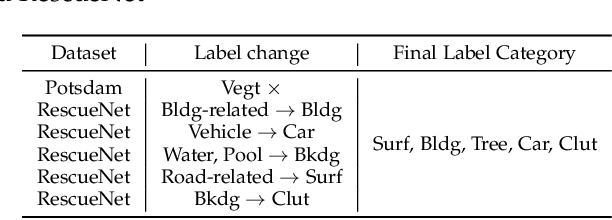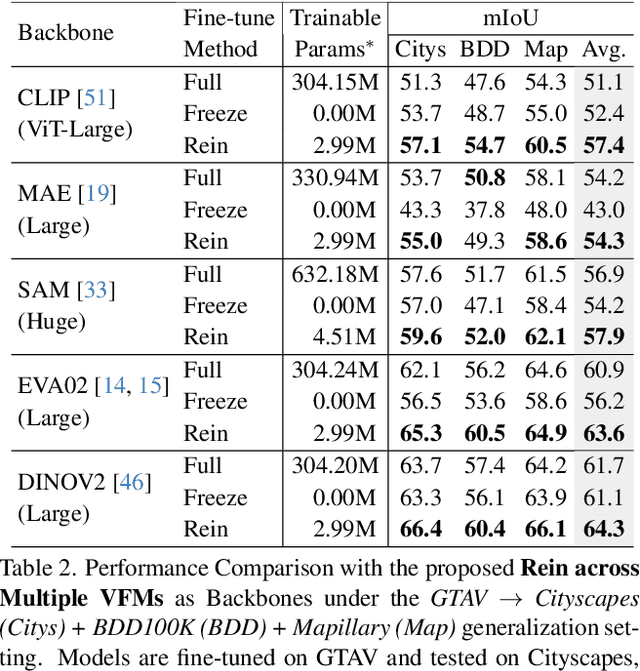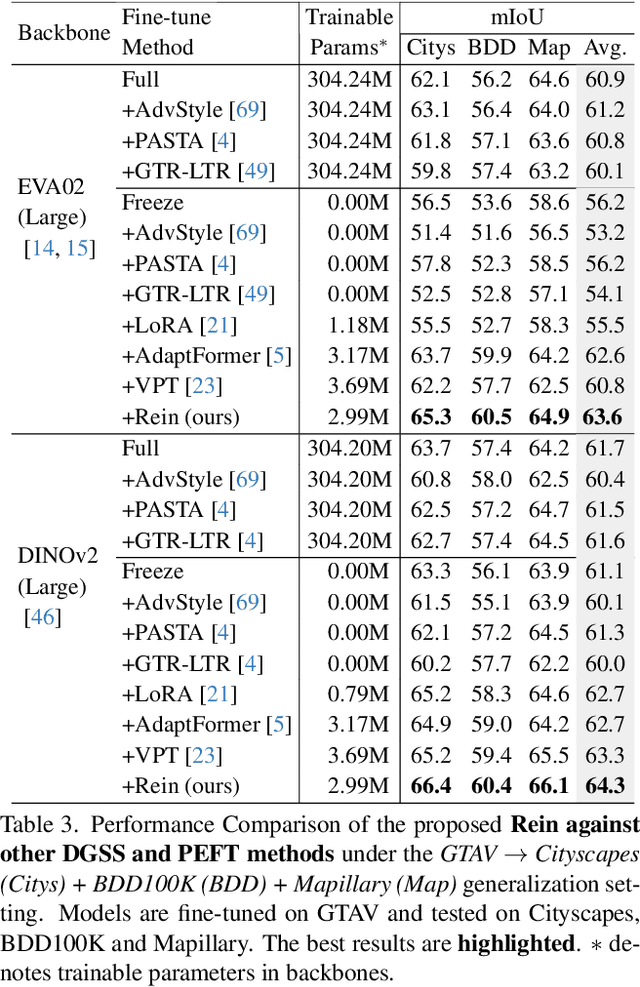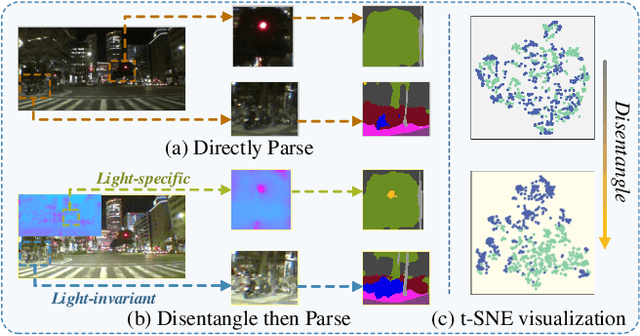Zhixiang Wei
HQ-CLIP: Leveraging Large Vision-Language Models to Create High-Quality Image-Text Datasets and CLIP Models
Jul 30, 2025Abstract:Large-scale but noisy image-text pair data have paved the way for the success of Contrastive Language-Image Pretraining (CLIP). As the foundation vision encoder, CLIP in turn serves as the cornerstone for most large vision-language models (LVLMs). This interdependence naturally raises an interesting question: Can we reciprocally leverage LVLMs to enhance the quality of image-text pair data, thereby opening the possibility of a self-reinforcing cycle for continuous improvement? In this work, we take a significant step toward this vision by introducing an LVLM-driven data refinement pipeline. Our framework leverages LVLMs to process images and their raw alt-text, generating four complementary textual formulas: long positive descriptions, long negative descriptions, short positive tags, and short negative tags. Applying this pipeline to the curated DFN-Large dataset yields VLM-150M, a refined dataset enriched with multi-grained annotations. Based on this dataset, we further propose a training paradigm that extends conventional contrastive learning by incorporating negative descriptions and short tags as additional supervised signals. The resulting model, namely HQ-CLIP, demonstrates remarkable improvements across diverse benchmarks. Within a comparable training data scale, our approach achieves state-of-the-art performance in zero-shot classification, cross-modal retrieval, and fine-grained visual understanding tasks. In retrieval benchmarks, HQ-CLIP even surpasses standard CLIP models trained on the DFN-2B dataset, which contains 10$\times$ more training data than ours. All code, data, and models are available at https://zxwei.site/hqclip.
Phantom: Constraining Generative Artificial Intelligence Models for Practical Domain Specific Peripherals Trace Synthesizing
Nov 10, 2024Abstract:Peripheral Component Interconnect Express (PCIe) is the de facto interconnect standard for high-speed peripherals and CPUs. Prototyping and optimizing PCIe devices for emerging scenarios is an ongoing challenge. Since Transaction Layer Packets (TLPs) capture device-CPU interactions, it is crucial to analyze and generate realistic TLP traces for effective device design and optimization. Generative AI offers a promising approach for creating intricate, custom TLP traces necessary for PCIe hardware and software development. However, existing models often generate impractical traces due to the absence of PCIe-specific constraints, such as TLP ordering and causality. This paper presents Phantom, the first framework that treats TLP trace generation as a generative AI problem while incorporating PCIe-specific constraints. We validate Phantom's effectiveness by generating TLP traces for an actual PCIe network interface card. Experimental results show that Phantom produces practical, large-scale TLP traces, significantly outperforming existing models, with improvements of up to 1000$\times$ in task-specific metrics and up to 2.19$\times$ in Frechet Inception Distance (FID) compared to backbone-only methods.
CrossEarth: Geospatial Vision Foundation Model for Domain Generalizable Remote Sensing Semantic Segmentation
Oct 31, 2024



Abstract:The field of Remote Sensing Domain Generalization (RSDG) has emerged as a critical and valuable research frontier, focusing on developing models that generalize effectively across diverse scenarios. Despite the substantial domain gaps in RS images that are characterized by variabilities such as location, wavelength, and sensor type, research in this area remains underexplored: (1) Current cross-domain methods primarily focus on Domain Adaptation (DA), which adapts models to predefined domains rather than to unseen ones; (2) Few studies targeting the RSDG issue, especially for semantic segmentation tasks, where existing models are developed for specific unknown domains, struggling with issues of underfitting on other unknown scenarios; (3) Existing RS foundation models tend to prioritize in-domain performance over cross-domain generalization. To this end, we introduce the first vision foundation model for RSDG semantic segmentation, CrossEarth. CrossEarth demonstrates strong cross-domain generalization through a specially designed data-level Earth-Style Injection pipeline and a model-level Multi-Task Training pipeline. In addition, for the semantic segmentation task, we have curated an RSDG benchmark comprising 28 cross-domain settings across various regions, spectral bands, platforms, and climates, providing a comprehensive framework for testing the generalizability of future RSDG models. Extensive experiments on this benchmark demonstrate the superiority of CrossEarth over existing state-of-the-art methods.
Seed Optimization with Frozen Generator for Superior Zero-shot Low-light Enhancement
Feb 15, 2024



Abstract:In this work, we observe that the generators, which are pre-trained on massive natural images, inherently hold the promising potential for superior low-light image enhancement against varying scenarios.Specifically, we embed a pre-trained generator to Retinex model to produce reflectance maps with enhanced detail and vividness, thereby recovering features degraded by low-light conditions.Taking one step further, we introduce a novel optimization strategy, which backpropagates the gradients to the input seeds rather than the parameters of the low-light enhancement model, thus intactly retaining the generative knowledge learned from natural images and achieving faster convergence speed. Benefiting from the pre-trained knowledge and seed-optimization strategy, the low-light enhancement model can significantly regularize the realness and fidelity of the enhanced result, thus rapidly generating high-quality images without training on any low-light dataset. Extensive experiments on various benchmarks demonstrate the superiority of the proposed method over numerous state-of-the-art methods qualitatively and quantitatively.
Masked Pre-trained Model Enables Universal Zero-shot Denoiser
Jan 26, 2024Abstract:In this work, we observe that the model, which is trained on vast general images using masking strategy, has been naturally embedded with the distribution knowledge regarding natural images, and thus spontaneously attains the underlying potential for strong image denoising. Based on this observation, we propose a novel zero-shot denoising paradigm, i.e., Masked Pre-train then Iterative fill (MPI). MPI pre-trains a model with masking and fine-tunes it for denoising of a single image with unseen noise degradation. Concretely, the proposed MPI comprises two key procedures: 1) Masked Pre-training involves training a model on multiple natural images with random masks to gather generalizable representations, allowing for practical applications in varying noise degradation and even in distinct image types. 2) Iterative filling is devised to efficiently fuse pre-trained knowledge for denoising. Similar to but distinct from pre-training, random masking is retained to bridge the gap, but only the predicted parts covered by masks are assembled for efficiency, which enables high-quality denoising within a limited number of iterations. Comprehensive experiments across various noisy scenarios underscore the notable advances of proposed MPI over previous approaches with a marked reduction in inference time. Code is available at https://github.com/krennic999/MPI.git.
Stronger, Fewer, & Superior: Harnessing Vision Foundation Models for Domain Generalized Semantic Segmentation
Dec 14, 2023



Abstract:In this paper, we first assess and harness various Vision Foundation Models (VFMs) in the context of Domain Generalized Semantic Segmentation (DGSS). Driven by the motivation that Leveraging Stronger pre-trained models and Fewer trainable parameters for Superior generalizability, we introduce a robust fine-tuning approach, namely Rein, to parameter-efficiently harness VFMs for DGSS. Built upon a set of trainable tokens, each linked to distinct instances, Rein precisely refines and forwards the feature maps from each layer to the next layer within the backbone. This process produces diverse refinements for different categories within a single image. With fewer trainable parameters, Rein efficiently fine-tunes VFMs for DGSS tasks, surprisingly surpassing full parameter fine-tuning. Extensive experiments across various settings demonstrate that Rein significantly outperforms state-of-the-art methods. Remarkably, with just an extra 1% of trainable parameters within the frozen backbone, Rein achieves a mIoU of 68.1% on the Cityscapes, without accessing any real urban-scene datasets.Code is available at https://github.com/w1oves/Rein.git.
Disentangle then Parse:Night-time Semantic Segmentation with Illumination Disentanglement
Jul 19, 2023



Abstract:Most prior semantic segmentation methods have been developed for day-time scenes, while typically underperforming in night-time scenes due to insufficient and complicated lighting conditions. In this work, we tackle this challenge by proposing a novel night-time semantic segmentation paradigm, i.e., disentangle then parse (DTP). DTP explicitly disentangles night-time images into light-invariant reflectance and light-specific illumination components and then recognizes semantics based on their adaptive fusion. Concretely, the proposed DTP comprises two key components: 1) Instead of processing lighting-entangled features as in prior works, our Semantic-Oriented Disentanglement (SOD) framework enables the extraction of reflectance component without being impeded by lighting, allowing the network to consistently recognize the semantics under cover of varying and complicated lighting conditions. 2) Based on the observation that the illumination component can serve as a cue for some semantically confused regions, we further introduce an Illumination-Aware Parser (IAParser) to explicitly learn the correlation between semantics and lighting, and aggregate the illumination features to yield more precise predictions. Extensive experiments on the night-time segmentation task with various settings demonstrate that DTP significantly outperforms state-of-the-art methods. Furthermore, with negligible additional parameters, DTP can be directly used to benefit existing day-time methods for night-time segmentation.
Deliberated Domain Bridging for Domain Adaptive Semantic Segmentation
Sep 16, 2022



Abstract:In unsupervised domain adaptation (UDA), directly adapting from the source to the target domain usually suffers significant discrepancies and leads to insufficient alignment. Thus, many UDA works attempt to vanish the domain gap gradually and softly via various intermediate spaces, dubbed domain bridging (DB). However, for dense prediction tasks such as domain adaptive semantic segmentation (DASS), existing solutions have mostly relied on rough style transfer and how to elegantly bridge domains is still under-explored. In this work, we resort to data mixing to establish a deliberated domain bridging (DDB) for DASS, through which the joint distributions of source and target domains are aligned and interacted with each in the intermediate space. At the heart of DDB lies a dual-path domain bridging step for generating two intermediate domains using the coarse-wise and the fine-wise data mixing techniques, alongside a cross-path knowledge distillation step for taking two complementary models trained on generated intermediate samples as 'teachers' to develop a superior 'student' in a multi-teacher distillation manner. These two optimization steps work in an alternating way and reinforce each other to give rise to DDB with strong adaptation power. Extensive experiments on adaptive segmentation tasks with different settings demonstrate that our DDB significantly outperforms state-of-the-art methods. Code is available at https://github.com/xiaoachen98/DDB.git.
Reusing the Task-specific Classifier as a Discriminator: Discriminator-free Adversarial Domain Adaptation
Apr 08, 2022



Abstract:Adversarial learning has achieved remarkable performances for unsupervised domain adaptation (UDA). Existing adversarial UDA methods typically adopt an additional discriminator to play the min-max game with a feature extractor. However, most of these methods failed to effectively leverage the predicted discriminative information, and thus cause mode collapse for generator. In this work, we address this problem from a different perspective and design a simple yet effective adversarial paradigm in the form of a discriminator-free adversarial learning network (DALN), wherein the category classifier is reused as a discriminator, which achieves explicit domain alignment and category distinguishment through a unified objective, enabling the DALN to leverage the predicted discriminative information for sufficient feature alignment. Basically, we introduce a Nuclear-norm Wasserstein discrepancy (NWD) that has definite guidance meaning for performing discrimination. Such NWD can be coupled with the classifier to serve as a discriminator satisfying the K-Lipschitz constraint without the requirements of additional weight clipping or gradient penalty strategy. Without bells and whistles, DALN compares favorably against the existing state-of-the-art (SOTA) methods on a variety of public datasets. Moreover, as a plug-and-play technique, NWD can be directly used as a generic regularizer to benefit existing UDA algorithms. Code is available at https://github.com/xiaoachen98/DALN.
 Add to Chrome
Add to Chrome Add to Firefox
Add to Firefox Add to Edge
Add to Edge